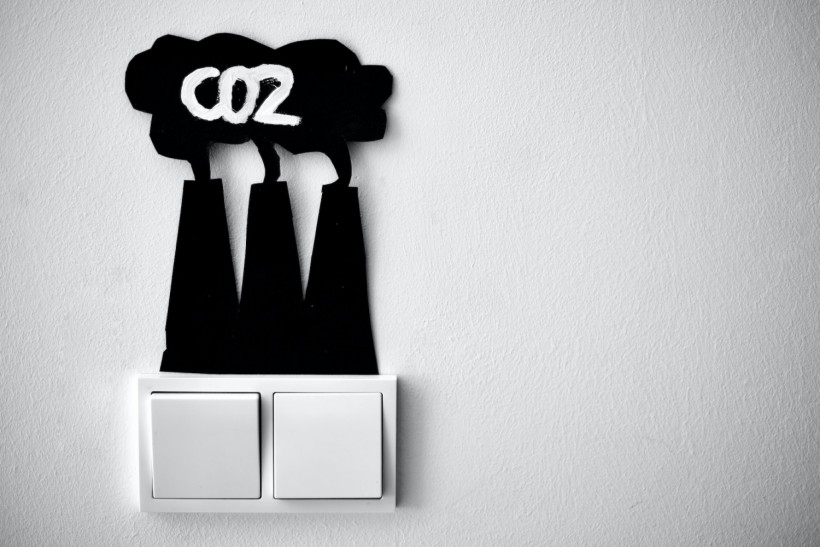The climate issue has always been a concern of human beings, which not only affects our physical health, but also affects the living environment of various species. In May this year, the IPCC released a report on the world's progress in mitigating climate change, saying that greenhouse gas (GHG) emissions from all major global industries are still rising, but fortunately renewable energy is currently cheaper compared with coal, oil and natural gas. Developing countries are expected to require as much as $6 trillion by 2030 to address climate concerns. In the process, many countries hope to mitigate the problem through carbon markets.
The carbon market is actually a trading system for buying and selling carbon credits, where one tradable carbon credit is equal to one ton of carbon dioxide or the equivalent reduction in greenhouse gases. Individuals or businesses can accrue points for themselves by actively reducing their carbon and other greenhouse gas emissions. Currently, carbon trading markets can be regulated, required by national, regional or international policies, and can also issue, buy and sell carbon credits on a voluntary basis (this part of the supply comes primarily from private entities developing carbon projects, or governments with standard certification schemes of carbon). The demand side is primarily individuals looking to offset their carbon footprints, companies with corporate sustainability goals, and other players aiming to trade credits at higher prices for profit.
The existing well-known carbon trading market is just like the world's first international carbon emissions trading system ETS (emissions trading systems) established by the European Union in 2005. Regulated companies or countries obtain emission/pollution licenses or quotas issued by the government, Those who exceed the emission limit must buy permits from others who have permits to sell. Last year, China launched the world's largest carbon emissions trading system, which is estimated to cover about one-seventh of the world's carbon emissions from burning fossil fuels.
The reduction of greenhouse gas emissions is closely related to the destiny of mankind, and more national and local ETS are now in operation or under development. From a personal perspective, there are some things you can do to reduce greenhouse gas emissions:
1. Reduce the use of disposable products
At present, in everyone's daily life, disposable daily necessities, such as water cups, toothbrushes, packaging boxes, and plastic bags, can be seen everywhere. Such disposable products will generate a large amount of greenhouse gas emissions during the production process. Therefore you can choose to bring your own reusable and healthy drinking bottles, recyclable shopping bags, etc., to reduce the production of disposable products.
2. Take a healthier approach to travel
Although the economic conditions of most people are good at present and almost every family has a car, too much car driving will lead to excessive carbon emissions. If it is a short trip, you'd better walk, run, cycle or take transportation. In this way, you also increase daily exercise unknowingly.
3. Unplug the appliance when not in use
When people sometimes leave the office or leave home, they may forget to turn off the power, resulting in too many appliances on standby. This will not only waste electricity, but also burn related coal and fuel oil in the process of producing electricity, which will undoubtedly increase carbon emissions. Replacing the energy-saving light bulbs for your home is also a good choice.
4. Take extra care when using your car
When people travel in their cars, it is important to keep the tires at a healthy pressure level. If tires are low pressure, more power is required to increase emissions while driving, so tires should be serviced regularly. You can search coupons for tire maintenance on CouponBirds which will save a lot of money for you. In addition, you should not accelerate or step on the brakes suddenly, but judge the road conditions in real time and keep the car running smoothly, otherwise it will increase the fuel consumption and cause unnecessary energy production and emissions.
5. The way out for the old items isn't just the dump
Everyone usually has old clothes, old toys, old appliances and other items, and sometimes they want to replace them with new ones. What should you do with the old ones? Throw them away? In fact, you can sell the functional old items to a thrift store, second-hand market, yard sale or donate to a charity, and it can be reused, which can not only avoid a lot of waste, but also reduce the cost of waste disposal and greenhouse gas emissions.
6. Reduce food waste
When you throw away food, you are also wasting resources and energy used to grow, produce, package and transport food. And when food rots in landfills, it produces methane, a powerful greenhouse gas. So make full use of what you buy, don't hoard too much food and avoid waste effectively.
7. Eat more vegetables
Eating more vegetables, fruits, whole grains, legumes, nuts and seeds and less meat and dairy can greatly reduce your impact on the environment. Producing plant-based food typically emits fewer greenhouse gases and requires less energy, land and water.
8. Add green to the earth
To purify the earth's greenhouse gases can be solved by increasing the forest cover of many kinds of trees, but this is usually not easy to achieve for individuals. Individuals can plant some flowers and plants at home, absorb carbon dioxide from their surrounding environment, and do not need to drive out to find open spaces to plant trees, killing two birds with one stone.
9. Use cold water to wash and air-dry clothes
You can use cold water and do your laundry at full capacity, reducing water and energy usage, saving not only money but also energy consumption. Try to use the sun to dry naturally after washing, not the dryer. It can effectively reduce the energy consumption caused by the use of electricity.
Greenhouse gas emission reduction and environmental protection are not achieved in a day or a year. The country needs to pass correct and strict laws and regulations, and individuals need to develop a good habit of daily emission reduction. Only in this way can people gradually reduce excessive emissions of greenhouse gases, slow down the rate of global temperature increase, and protect the habitats that people depend on.
© 2024 NatureWorldNews.com All rights reserved. Do not reproduce without permission.
* This is a contributed article and this content does not necessarily represent the views of natureworldnews.com





![Chimpanzee Behavior: Chimp Wars Show That Murder and Violence are Not Exclusive to Humans [Report]](https://1471793142.rsc.cdn77.org/data/thumbs/full/70473/280/157/50/40/chimpanzee-behavior-chimp-wars-show-that-murder-and-violence-are-not-exclusive-to-humans-report.jpg)
